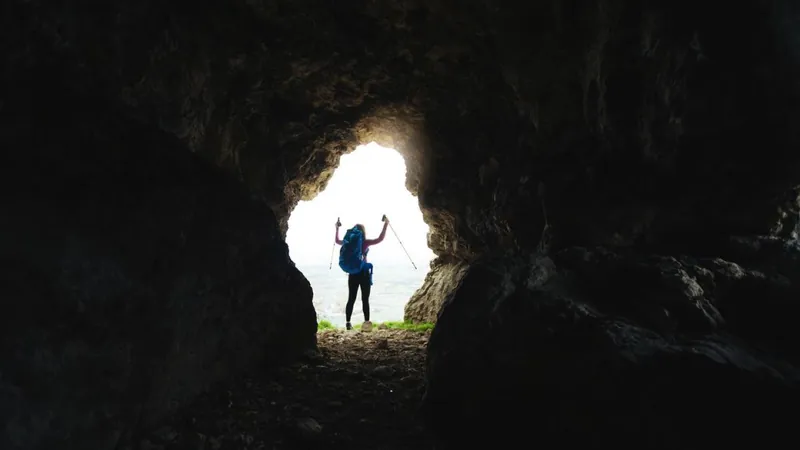
Hiker Uncovers Ancient 280-Million-Year-Old Fossil Realm in the Italian Alps
2024-11-23
Author: Ming
A breathtaking discovery has unfolded in the Italian Alps: a fossilized world teeming with remnants of amphibians, plant life, and ancient ecosystems dating back approximately 280 million years. This significant find was made by an adventurous hiker at an elevation of over 5,500 feet.
The hidden site within Orobie Valtellinesi Park has emerged as a vital piece of Earth's history, revealing an entire Paleozoic-era ecosystem that thrived before the age of dinosaurs. As the climate warms and glaciers recede, treasures buried under ice for millennia are now exposed, providing an incredible window into prehistoric life. The extent of this site is remarkable, featuring footprints of ancient species, fossilized plants, and even the delicate impressions of raindrops that fell on the landscape long ago.
Experts have expressed their astonishment at the site's preservation. Lorenzo Marchetti, a sedimentology expert at the Leibniz Institute for Research on Evolution and Biodiversity in Berlin, noted, “The sediments' fine grain has preserved extraordinary details, such as the imprints of fingertips and skin textures of creatures.” This high level of preservation suggests the ecosystem was more diverse than many others of its geological age.
The hiker, Claudia Steffensen, shared her fascinating story of the discovery. On a scorching summer day in 2023, seeking refuge in the cool alpine air, she stumbled upon unusual rock markings that resembled a cement slab. Intrigued by the circular designs and wavy lines, she investigated further and realized they were fossilized footprints. Her keen observation led to immediate action; after capturing photographs, she contacted her friend, nature photographer Elio Della Ferrera, who subsequently informed investigators at the Natural History Museum of Milan.
The research team quickly mobilized to document hundreds of fossil traces, which are still being revealed on the vertical rock faces and land accumulations, some rising nearly 10,000 feet above sea level. Cristiano Dal Sasso, a paleontologist at the museum, indicated that dinosaurs had yet to appear on Earth during this time, suggesting the existence of sizable creatures that left behind these incredible footprints.
Sedimentologist Ausonio Ronchi explained that the footprints were preserved due to specific climatic conditions at the time. “The imprints were formed when the sandstone and clay were saturated with water. The summer sun dried the surfaces, hardening them, and any later water only added a protective layer that preserved these ancient markers,” he stated.
In addition to the footprints, the site boasts fossilized leaves, stems, and seeds, highlighting the vibrant plant life of that era. Massimo Merati, the park director, emphasized that the Orobic territory is now akin to an expansive open-air laboratory for researchers. Innovative mapping technologies, including drones and helicopters, are being employed to navigate the rocky terrain and recover precious fossil findings.
Stefano Rossi from the Superintendence of Archeology noted the potential of this site to become a crucial area for academic study and a training ground for students and researchers alike.
As climate change unveils more of our planet's hidden past, this striking find not only captivates scientists but also ignites the imagination of nature enthusiasts and scholars worldwide. The world is now watching closely as researchers unlock the mysteries of this ancient ecosystem, sending ripples of excitement through the global paleontological community.



 Brasil (PT)
Brasil (PT)
 Canada (EN)
Canada (EN)
 Chile (ES)
Chile (ES)
 España (ES)
España (ES)
 France (FR)
France (FR)
 Hong Kong (EN)
Hong Kong (EN)
 Italia (IT)
Italia (IT)
 日本 (JA)
日本 (JA)
 Magyarország (HU)
Magyarország (HU)
 Norge (NO)
Norge (NO)
 Polska (PL)
Polska (PL)
 Schweiz (DE)
Schweiz (DE)
 Singapore (EN)
Singapore (EN)
 Sverige (SV)
Sverige (SV)
 Suomi (FI)
Suomi (FI)
 Türkiye (TR)
Türkiye (TR)